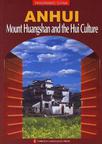全景中国
出版时间:2006-1 出版社:外文出版社 作者:张宗良 页数:261
内容概要
Anhui Province, often referred to as Wan, is situated in the north end of eastern China. The province has a territory of 139600 square kilometers and a population of 64.5 million, with Hefei as its capital. The yantze River in the south of the province and the Huaihe River in the north flow across it in an easterly direction, dividing the province into three regions of Wannan, Jianghuai and Huaibei. South of the Yangtze lies Wannan, a land of mounations where green hills and peaks meet the eyes wherever the gaze. Here one can find the Buddhist mounation Mount Jiuhua, the Taoist mountain Mount Qiyun, and UNESCO World Cultural and Natural Heritage Sites-Mount Huangshan, Xidi and Honcun Villages. The Hui Culture-the long and brilliant culture of the region has engendered its own particular schools and genres in such disciplines and philosophy, literature, poetry, drama, painting, medicine and architecture and is an important component of Chinese culture. THe book is an introduction to the Hui Culture and the dreamlike Mount Huangshan-a work by the magic hand of nature.
书籍目录
Perface1.The Imperial Mount Huangshan2.The Hui Culture
章节摘录
书摘IntroductionChina has 23 provinces, four municipalities directly under the Central Government, five autonomous regions and two special administrative regions. Due to geographic and topographical differences and climatic varieties, each area has its own unique natural scenery. The mountains in the north of the country are rugged, the Gobi in the northwest shines brilliantly in the sunlight, the hills in the southeast are often shrouded in floating fog, green waves of sorghum and soybean crops undulate over the vast fields of the northeast, and the mountains in the southwest, with sequestered villages and terraced fields, look tranquil and picturesque.There are 56 ethnic groups in China. The Han, making up the overwhelming majority of the population, mainly live in the eastern and central parts of the country, while many ethnic groups, regardless of size, are equal and respect each other. Each ethnic group has its own folk customs, religious beliefs and cultural traditions, and most use their own language and script. Regional autonomy is practiced in areas where ethnic minorities live in compact communities. All the ethnic groups call themselves “Chinese.” They are courteous and friendly. In the ethnic-minority areas, the quiet environment, quaint buildings, exquisite fashions, unsophisticated folk customs and hospitality of the local people hold a great appeal to visitors from afar.China boasts 5,000 years of recorded civilization and a brilliant culture. The country is home to such world-renowned cultural treasures as the Great Wall, terracotta warriors and horses of the First Emperor of the Qin Dynasty, Mogao Grottoes at Dunhuang, and Ming and Qing imperial palace and mausoleums, and large numbers of ancient architectural masterpieces, including temples, Buddhist pagodas, residential buildings, gardens, bridges, city walls and irrigation works. There are also cultural relics unearthed from ancient sites, including painted pottery, jade ware, bronze ware, large and ornate tombs and foundations of historical buildings, and many more as yet undiscovered. The museum of China’s various provinces, municipalities and autonomous regions house of thousands of cultural relics and works of art, among which are treasures rare in the world, displaying the long history of China and the splendid Chinese culture from different aspects. The strong, deep-rooted Chinese culture has always influenced the mentality and moral standards of the Chinese people, having developed continually in pace with the civilization. A careful study of today’s Peking opera, kunqu opera, shadow plays, calligraphy, painting, paper-cutting, and even the flower-shaped steamed buns on the kitchen range of farmers will reveal elements of traditional Chinese culture as well as replications of the art of the past.Like other countries of venerable age, China has suffered grievous calamities. During the century and more before the 1950s, the Chinese people made unrelenting struggles for the prosperity of the country, and national independence and liberation. A large number of insightful people and revolutionaries, cherishing all kinds of dreams for a strong China, studied the ways of the West in a quest for prosperity and strength, and borrowed the revolutionary experience of foreign countries. At last, the Communist Party of China, proceeding from the reality of China, and relying on the working people, founded a brand-new country, the People’s Republic of China, in 1949. Since then, the Chinese people have made persistent efforts and explorations for the grand revitalization of the Chinese nation. The Chinese people’s efforts in the past two decades and more have resulted in outstanding achievements, with rapid social progress, a well-developed economy, and a modern civilization and traditional culture enhancing each other.It is easy to have a quick look at China’s past and present, but it takes time to gain a panoramic knowledge of China. The "Panoramic China" series is meant to assist readers, especially those overseas, in this respect. Each volume in the series focuses on a province, municipality or autonomous region, describing, with illustrations, the outstanding characteristics of each area from different perspectives. Through this series, the reader will acquire knowledge of the real and vivid daily life of the local people, the colorful society and the developing economy, assisted by relevant information.插图
编辑推荐
本书为“全景中国”系列丛书之一,全方位展示景色秀丽的黄山风光和悠久璀璨的徽州文化,在哲学、文学、诗歌、绘画、戏剧、医学、建筑等多个领域形成了独特的流派,是中华文化的重要组成部分。在读者的面前开启一扇认知安徽的窗口。为愿意了解和亲身感受黄山,及到安徽游览观光的读者朋友提供有益的帮助。
图书封面
评论、评分、阅读与下载
